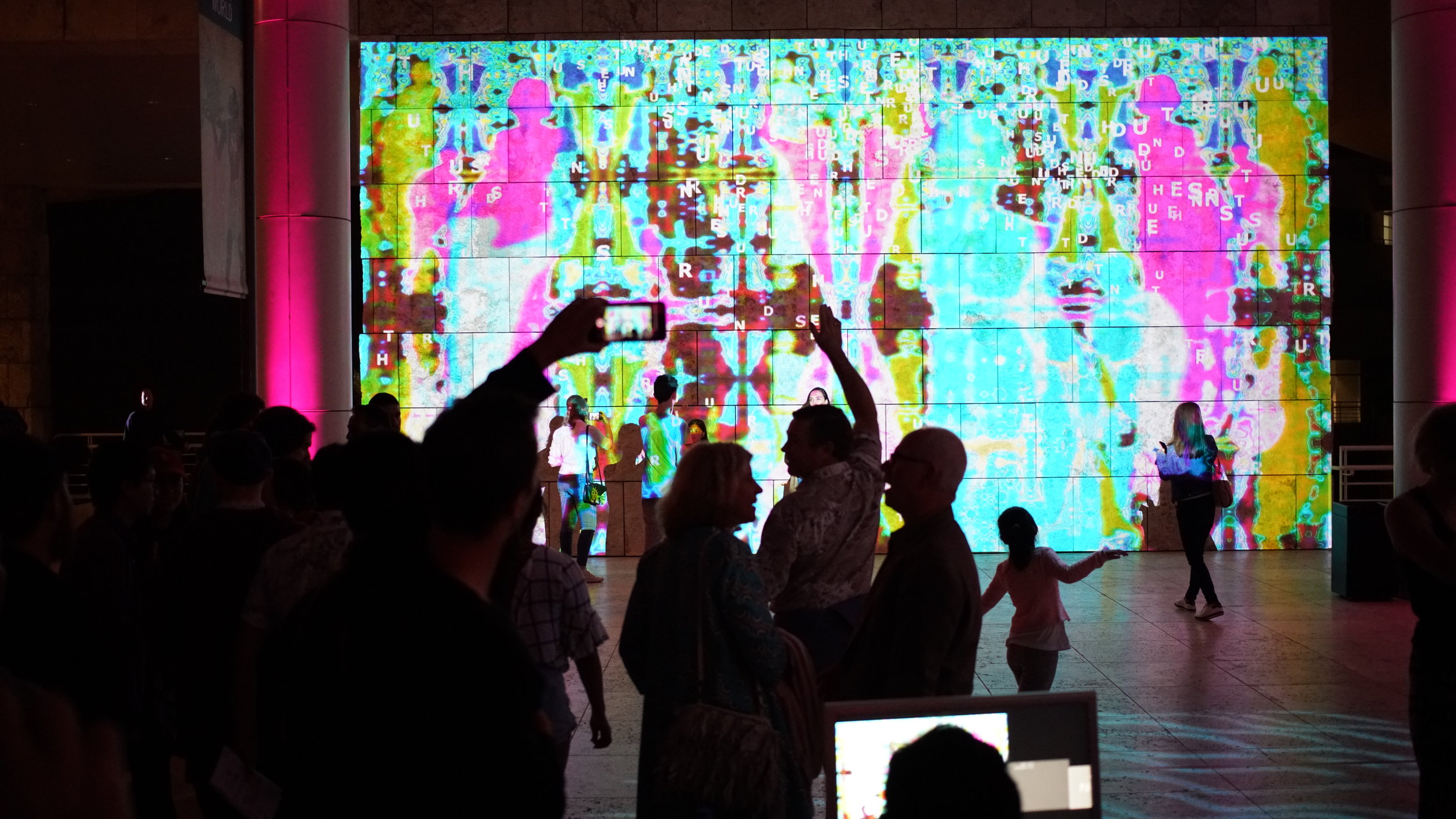The Getty - Pixel Rhythms






The Dream
The J. Paul Getty Museum approached USC School of Cinematic Arts with a wild idea.
They dreamed of covering the museum exterior with awe-inspiring projection-mapped art. At the center of this installation, they imagined inviting museum-goers into the act of creation itself.
What does it look like to step into a living painting? What if an audience of thousands of people could walk into this world of light, color, and composition?
The Inspiration
USC School of Cinematic Arts’ Animation and Interactive Media Divisions joined forces in order to create an Interactive Installation. We wanted audiences to embody the art that inspires them. We wanted to empower people to feel the wonderful joy of creation and self expression.
We drew technological inspiration from interactive art of Myron Krueger. Krueger used a computer vision techniques to convert live video of a person into imagery that could be projected on a wall in front of them.
Myron Krueger, “Videoplace”, 1974
Another key inspiration was contemporary artist Miwa Matreyek. Matreyek stands in front of a projector so that the silhouette of her body is inside of her hand-crafted animation art. In her carefully choreographed performances, her silhouette is the centerpiece of her compositions.
Miwa Matreyek, “Myth and Infrastructure”, 2010
Silhouettes are fascinatingly strange and wonderful because unlike a mirror, they are anonymous. Surrealist Paintings by Rene Magritte used the anonymous figure of a bowler hat man. The bowler hat man can be any person’s body. Magritte’s Bowler Hat Man series implicated audiences into the painting. Moreover, this technique renders the human figure into a formal element of artistic composition.
The Vision
We brainstormed a series of moving images. We decided on 7 images, in order to represent 7 fundamental principles of art & design:
Symmetry
Contrast
Pattern
Movement
Emphasis
Rhythm
Unity
We needed to build a system that could support a massive wall and an audience of thousands of people. The system would be able to put anyone who stepped in front of the wall inside of the imagery instantly. Their silhouette figure needed to be readable, responsive, and larger than life.
The Execution
The team would use a Microsoft Kinect Version 2 sensor because of its high resolution color and depth-sensing cameras. We decided on Derivative TouchDesigner as the development tool because of its ability to rapidly prototype data manipulation.
Our 7 Looks Based inspired by 7 Principles of Art & Design
The ability to visualize computer-generated effects implemented on Kinect data in real-time facilitated fast and radical collaboration between visual designers, programmers, and game designers not only because of its intrinsically visual approach, but also because it facilitated a unifying design language between graphic designers and game designers.
We placed the Kinect and control software far behind the wall. The projector mounted far above the crowd. Hiding the technology created a sense of magic. The audience had no idea how, but suddenly, they were on-screen, larger than life, part of a glorious tableau of color, motion and form.
The Team
Mike Patterson - Creative Direction & Event Design
Keshav Prasad - Creative Coder
Martzi Campos - Producer
Ann Lee - Producer
Will Michaelson - Project Mentor
Ankita Panda - Motion Designer & Installation Artist
Crystal Jow - Motion Designer & Installation Artist
Kaley Cho - Motion Designer & Installation Artist













